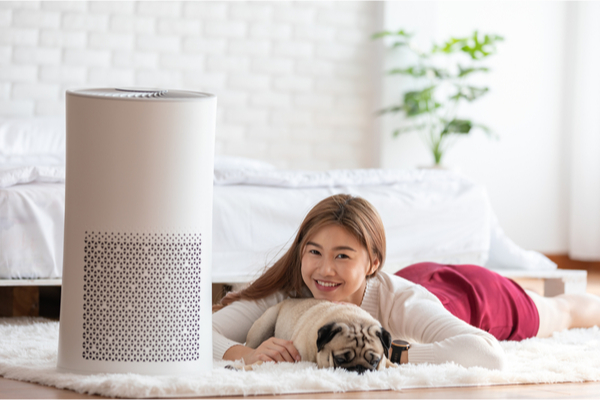As temperatures drop across much of the country and we’re forced to spend more time indoors, many of us are looking to clear the air, so to speak. Air purifiers have become a hot commodity this year, and though there’s evidence they can help alleviate allergies by removing dust, dander, mold, and other indoor pollutants, what about airborne viruses like COVID-19? “We see some promising lab data suggesting that different [air purification] strategies may be effective,” says Westyn Branch-Elliman, MD, MMSc, an infectious disease researcher and consultant, and assistant professor of medicine at Harvard Medical School. “But we need more data in real world settings before we can definitively say these strategies are effective for coronavirus.”
If an air purifier is part of your mitigation strategy, you’ll also want to continue practicing other mitigations. “It’s important to make sure we are maintaining multiple interventions at one time and not ever to rely on only one at a time,” Branch-Elliman says. In addition to like washing your hands, not touching your face, masking, keeping six feet of distance, and not being around others when sick, Branch-Elliman also recommends opening your window to get additional air flow. “There is a long history of using open air for infection prevention,” she says.
But air purifiers can have benefits, even if we don’t yet have definitive COVID-19 data, says Timothy McAuley, MS, PhD, and founder/CEO of CHANGE Environmental. “Air filters across the board provide support for improving air quality,” he says, including dust, mold, gases, and viruses.
If you are going to invest in an air purifier, here’s what you should know:
Don’t think of an air purifier in a bubble
Although we’d love to set it and forget it, putting an air purifier in your house isn’t as simple as just turning it on and never thinking about it again. The first thing you need to do is assess your space. “One size doesn’t always fit all,” says McAuley. “You need to think through things, like, do you allow shoes in the house? What areas have the most foot traffic? How big is the room? And how clean is your house?” Think about who is entering your house as well—is someone a frontline worker? Do you have a kid in school?
What to look for
According to McAuley, there is no air purifier that is considered the best on the market for everyone, but there are some standard things you’ll want to look for in an air filtration system. Some can go straight into your mechanical ventilation systems (installed by a professional) while others are out of the box and portable.
HEPA (high-efficiency particulate air) filters are what you should look for. They are fairly standard in most air filters, though it’s worth the due diligence of making sure. You’ll want to make sure it has a MERV (minimum efficiency reporting value) of 13 or higher. “This rating helps you understand how good the filter is at removing particulants like viruses,” says McAuley. Also keep in mind the size of the room. Many air filters specify the volume of the room they serve, so don’t put a small capacity air filter in a large room or it’ll be of little help.
Skip the bells and whistles
Don’t be misled by air purifiers that “seem” to have multiple levels of protection as McAuley says many of these features aren’t necessary and may actually be harmful. “UV light is not going above and beyond, you don’t actually need it,” she says. Other non-HEPA air purifiers can give off ozone, which can actually put yucky stuff back into the air.
Upkeep is key
Although we’d all like to have something with little upkeep required, having an air purifier is only beneficial if you are changing filters regularly and getting your system recalibrated (if it’s on your HVAC unit). In fact, if you don’t, it could actually increase your risk. “You can actually decrease the efficiency of the system and increase your risk to exposure with a stagnant indoor environment,” says McAuley.
—
Photo Credit: Yuttana Jaowattana / Shutterstock.com
